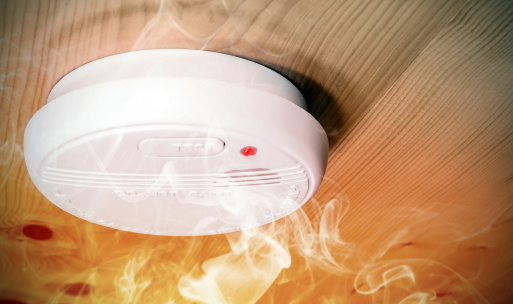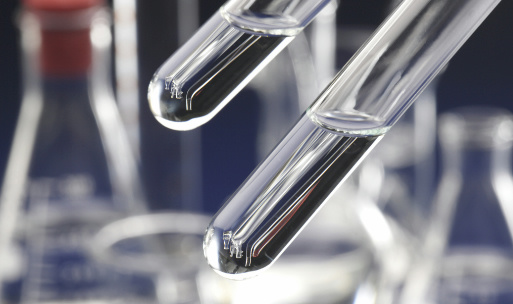Industrial CO₂ Sensors: Critical Tools for Ensuring Safety and Efficiency in Industrial Environments
Carbon dioxide (CO₂) is an essential gas in various industrial processes, yet it poses significant risks when concentrations exceed safe levels. In industrial environments, particularly in confined spaces, manufacturing settings, chemical production, and food storage, the ability to accurately monitor CO₂ levels is critical. This is where industrial CO₂ sensors come into play, providing the necessary technology to ensure both safety and operational efficiency.
These sensors are designed to detect and measure the concentration of CO₂ in the air, ensuring that the levels stay within safe limits to prevent accidents, protect worker health, and optimize industrial processes. From industrial production lines to confined spaces such as underground mines and storage rooms, CO₂ sensors are integral in a wide range of applications. This article explores the role of industrial CO₂ sensors, their types, technology, benefits, applications, challenges, and future developments in the industry.
What is an Industrial CO₂ Sensor?
An industrial CO₂ sensor is a device designed to measure the concentration of carbon dioxide gas in the atmosphere. These sensors are essential in environments where CO₂ is a byproduct or where high concentrations of the gas may accumulate, posing a potential risk to human health, safety, and the environment.
These sensors work on the principle of gas detection, often using advanced technologies such as Non-Dispersive Infrared (NDIR) sensing, chemical absorption, or solid-state sensors. Industrial CO₂ sensors continuously monitor CO₂ levels and trigger alarms or activate safety systems when concentrations exceed preset thresholds.
Key Features of Industrial CO₂ Sensors
- Accuracy: The primary function of CO₂ sensors is to provide precise and reliable measurements of CO₂ concentrations.
- Real-time Monitoring: Industrial CO₂ sensors offer continuous, real-time monitoring, providing immediate feedback on gas levels in the environment.
- Durability: These sensors are built to withstand harsh industrial conditions, including extreme temperatures, humidity, and exposure to other gases.
- Low Maintenance: While regular calibration and maintenance are necessary, industrial CO₂ sensors are generally designed for minimal maintenance, offering long operational lifespans.
Types of Industrial CO₂ Sensors
Industrial CO₂ sensors come in various types, each suited to specific applications and environments. The most commonly used technologies include:
1. Non-Dispersive Infrared (NDIR) Sensors
Non-Dispersive Infrared (NDIR) sensors are the most widely used type of CO₂ sensor in industrial applications. They work by measuring the absorption of infrared light by CO₂ molecules. When infrared light is passed through a sample of air, CO₂ molecules absorb specific wavelengths of light. By measuring the reduction in light intensity that reaches a detector, the sensor can calculate the concentration of CO₂ in the air.
Advantages of NDIR Sensors
- High Sensitivity: NDIR sensors are highly sensitive, capable of detecting even low concentrations of CO₂.
- Long-Term Stability: NDIR sensors are more stable over time compared to other types of sensors, making them suitable for long-term monitoring.
- Low Power Consumption: These sensors typically consume less power, making them ideal for continuous monitoring applications.
Disadvantages of NDIR Sensors
- Higher Initial Cost: NDIR sensors tend to be more expensive than other types of sensors, such as chemical sensors.
- Temperature Sensitivity: NDIR sensors may be affected by extreme temperatures, which can impact their accuracy and performance.
2. Chemical Absorption Sensors
Chemical absorption sensors detect CO₂ by passing a gas sample through a chemical solution. When CO₂ comes into contact with the solution, a chemical reaction occurs, changing the properties of the solution. This change is measured by the sensor and used to calculate the concentration of CO₂ in the air.
Advantages of Chemical Absorption Sensors
- Cost-Effective: Chemical absorption sensors are typically less expensive than NDIR sensors.
- Simplicity: These sensors have a simpler design and are relatively easy to maintain.
Disadvantages of Chemical Absorption Sensors
- Less Accurate: Chemical absorption sensors tend to be less accurate than NDIR sensors, especially at low concentrations of CO₂.
- Shorter Lifespan: The chemical solution used in these sensors may degrade over time, reducing the sensor’s lifespan and requiring more frequent maintenance.
3. Solid-State Sensors
Solid-state sensors use materials such as metal oxide semiconductors (MOS) to detect CO₂. When CO₂ comes into contact with the sensor, it changes the electrical resistance of the semiconductor material. This change in resistance is proportional to the concentration of CO₂ in the air.
Advantages of Solid-State Sensors
- Compact and Lightweight: Solid-state sensors are often smaller and more lightweight than NDIR or chemical absorption sensors, making them suitable for portable applications.
- Low Power Consumption: These sensors typically consume very little power, which is ideal for battery-operated devices.
Disadvantages of Solid-State Sensors
- Lower Sensitivity: Solid-state sensors are generally less sensitive than NDIR sensors and may struggle to detect low concentrations of CO₂.
- Limited Durability: Over time, solid-state sensors may degrade or experience drift, requiring frequent recalibration.
Winsen Industrial CO₂ Sensors
Applications of Industrial CO₂ Sensors
Industrial CO₂ sensors are used in a wide range of industries and applications to monitor CO₂ levels and ensure safety. Some of the most prominent applications include:
Food and Beverage Industry
In the food and beverage industry, CO₂ is used extensively for carbonating drinks, packaging, and creating controlled atmospheres for food preservation. CO₂ sensors are used to monitor gas concentrations in food packaging, storage rooms, and carbonating systems. Accurate monitoring of CO₂ ensures product quality and safety while preventing excess gas buildup that could affect the safety of the workers.
Chemical Manufacturing and Processing
In chemical manufacturing, CO₂ can be a byproduct of various reactions, such as fermentation or combustion. Industrial CO₂ sensors are used to monitor and control CO₂ emissions, ensuring compliance with environmental regulations and protecting workers from dangerous concentrations of the gas. By maintaining appropriate CO₂ levels, chemical plants can also optimize production efficiency.
Greenhouses and Agriculture
In greenhouses, CO₂ is often used to enhance plant growth. By monitoring CO₂ levels, agricultural workers can optimize conditions for plant growth and ensure that gas concentrations remain within safe limits. CO₂ sensors are also used to detect leaks or unintended accumulations of CO₂, which could harm both workers and crops.
Mining and Confined Spaces
In confined spaces, such as mines or underground storage areas, CO₂ can build up to dangerous levels, leading to the risk of asphyxiation. Industrial CO₂ sensors are crucial in these environments to detect and mitigate potential hazards. When CO₂ levels exceed predefined thresholds, the sensor activates alarms or ventilation systems to ensure worker safety.
HVAC Systems and Building Automation
In commercial and industrial buildings, CO₂ sensors are integrated into HVAC systems to monitor indoor air quality. By adjusting ventilation rates based on occupancy and CO₂ levels, these sensors help improve indoor air quality, reduce energy consumption, and maintain a comfortable environment for building occupants.
Environmental Monitoring
In industrial settings, environmental monitoring systems rely on CO₂ sensors to track emissions and ensure compliance with environmental regulations. CO₂ sensors play an important role in reducing the carbon footprint of industrial operations, particularly in manufacturing plants, power stations, and refineries.
Benefits of Industrial CO₂ Sensors
Safety
One of the most critical benefits of industrial CO₂ sensors is the enhanced safety they provide. CO₂ buildup in confined spaces can be hazardous, leading to oxygen displacement and asphyxiation. By monitoring CO₂ levels, these sensors provide early warnings of dangerous gas concentrations, allowing workers to take preventive measures and avoid exposure.
Compliance with Regulations
In many industries, there are strict regulations governing the permissible levels of CO₂. Industrial CO₂ sensors help ensure that companies comply with these regulations, avoiding costly fines and potential legal issues. Regular calibration of sensors ensures accurate readings and helps maintain compliance with environmental and safety standards.
Improved Efficiency
CO₂ sensors play a key role in optimizing industrial processes. In the food industry, for example, accurate CO₂ monitoring ensures that products are properly preserved and packaged, reducing waste and improving shelf life. In manufacturing, CO₂ sensors help optimize production lines, reducing emissions and improving overall efficiency.
Cost Savings
By ensuring optimal CO₂ levels in industrial systems, CO₂ sensors can help companies save money. In HVAC systems, for example, demand-controlled ventilation reduces energy consumption by adjusting airflow based on real-time CO₂ concentrations. This leads to significant cost savings on heating, cooling, and ventilation.
Challenges and Limitations of Industrial CO₂ Sensors
Calibration and Maintenance
One of the key challenges with industrial CO₂ sensors is maintaining their accuracy over time. Sensors can drift, and environmental factors such as temperature, humidity, and exposure to other gases can affect their performance. Regular calibration and maintenance are required to ensure the sensors continue to provide reliable measurements.
Environmental Interference
Industrial environments often contain a mix of gases, chemicals, and particulate matter that can interfere with sensor performance. CO₂ sensors need to be carefully chosen and maintained to avoid cross-sensitivity to other gases, such as methane, ammonia, or volatile organic compounds (VOCs).
Initial Cost
While CO₂ sensors are generally cost-effective in the long term, the initial investment can be significant, especially for high-accuracy NDIR sensors. This can be a barrier for small businesses or organizations with limited budgets.
Future Trends in Industrial CO₂ Sensor Technology
As technology advances, industrial CO₂ sensors are becoming more sophisticated, offering enhanced performance and new capabilities. Some of the key trends shaping the future of CO₂ sensor technology include:
Integration with IoT and Smart Systems
The rise of the Internet of Things (IoT) has led to the development of smart CO₂ sensors that can be connected to cloud-based platforms for real-time data monitoring and analysis. These sensors allow remote monitoring, automated alerts, and integration with industrial automation systems.
Miniaturization and Wearable Sensors
Advancements in sensor technology are leading to the development of smaller, more portable CO₂ sensors. These sensors can be integrated into wearable devices, making them ideal for personal safety applications in hazardous industrial environments.
Improved Energy Efficiency
New developments in low-power sensor technology are making it possible to deploy CO₂ sensors in remote or battery-powered applications. These improvements help reduce power consumption while maintaining high accuracy and reliability.
AI and Predictive Analytics
The integration of artificial intelligence (AI) with CO₂ sensors is enabling predictive maintenance and advanced data analysis. AI-driven algorithms can detect patterns in CO₂ concentration trends, helping industries anticipate potential safety hazards before they occur.
Conclusion
Industrial CO₂ sensors are indispensable tools for ensuring safety, regulatory compliance, and operational efficiency in a wide range of industries. Whether in food processing, manufacturing, environmental monitoring, or confined spaces, these sensors play a critical role in maintaining safe working environments and optimizing industrial processes.
As technology continues to advance, industrial CO₂ sensors are becoming smarter, more efficient, and better integrated with modern automation systems. With continued research and innovation, the next generation of CO₂ sensors will provide even greater accuracy, durability, and energy efficiency, further enhancing industrial safety and productivity.
For businesses operating in industries where CO₂ monitoring is essential, investing in high-quality industrial CO₂ sensors is a crucial step toward ensuring workplace safety, improving efficiency, and meeting regulatory requirements.










